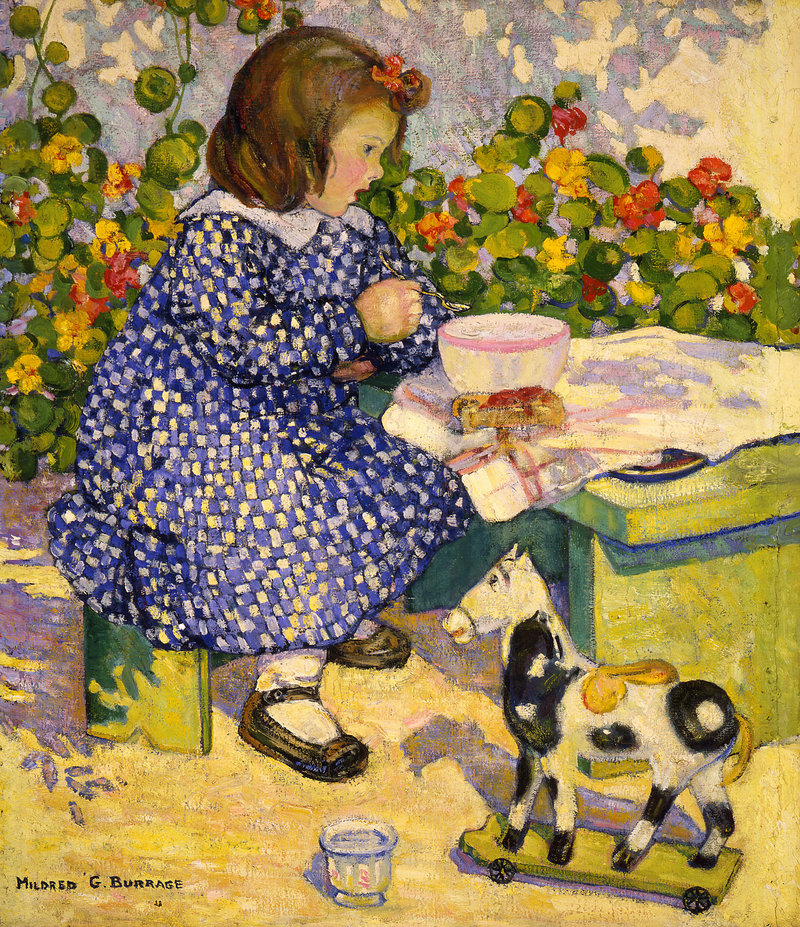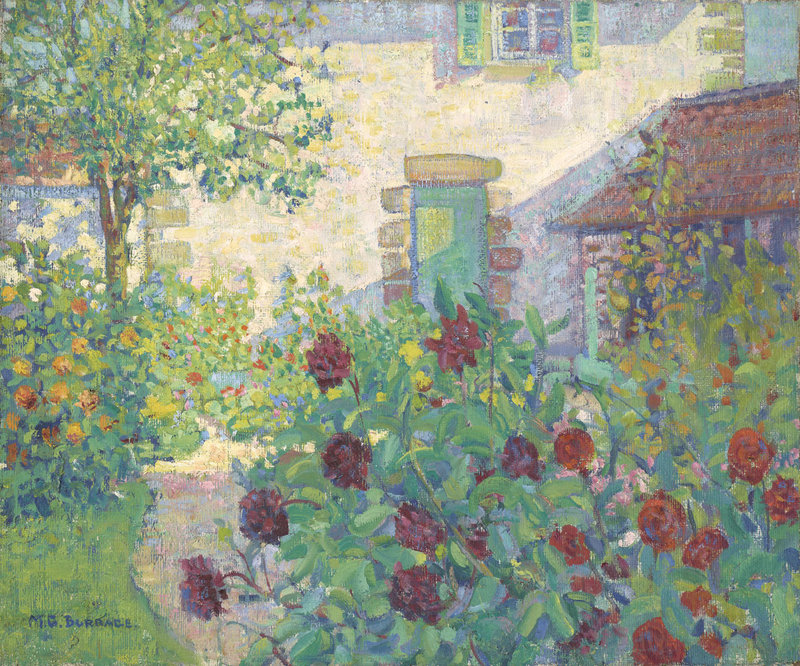Mildred Burrage grew up in Portland’s West End and lived a long and prosperous life as an artist in Maine.
But hers was hardly a common life. She met many of the most famous and influential artists, writers and leaders of her day, including Claude Monet, Gertrude Stein and Civil War general and Maine governor Joshua Chamberlain.
“She was a dynamic person right up until the end of her life,” said Maine State Historian Earle G. Shettleworth Jr., who knew Burrage. “She was extremely intelligent, very forceful and very forthright.”
And a fine Impressionist painter.
Beginning Saturday, the Portland Museum of Art will show more than 70 works of Burrage’s art, including paintings, drawings and letters from a collection given to the museum in the 1980s. “From Portland to Paris: Mildred Burrage’s Years in France” focuses on the artist’s early years, when she traveled to France and lived in a summer home in Giverny, which happened to be next door to Monet’s home.
Burrage was born in 1890 and died in 1983. Shettleworth interviewed her for a school project while he was a senior at Colby College in 1970, and he remained friendly with her until her death.
Burrage, who received her training in Portland, created oil paintings and filled sketchbooks with images. She also wrote volumes of letters to her family back in Maine. Shettleworth transcribed those letters, which are part of the exhibition.
“She went over (to France) as a 19-year-old from Portland, Maine, to Giverny and Paris, and was over there four different times for long stays, from 1909 to 1914,” said Shettleworth. “Eighty of her letters survived, and they tell a remarkable story.”
Shettleworth co-curated the exhibition with Margaret E. Burgess, European art curator at the PMA. Burgess said Burrage’s painting style reflected the influences she encountered in France. She became part of the close-knit artistic community in Giverny, and took up what Burgess calls a decorative Impressionist style.
“I appreciate how her paintings are infused with the same youthful exuberance as her letters, and their pleasing colors — she captured the green and yellow mustard fields and haystacks ever present in Giverny, the rich reds of the roses in the flower gardens, and the vistas and figures that she saw around her,” Burgess said.
“I find her use of interesting perspectives in certain paintings, such as ‘November Day’ and ‘French Landscape’ with its garden path, also very intriguing. The paintings are fresh and bright, and reflect her working out her style as a Maine woman artist abroad and entrenched in France.”
The letters that are part of this show are much more than an add-on, Burgess said. They provide important context to the artist’s time in France, and fill out her story on a personal level. Many of her letters include watercolor sketches.
“I feel as if I got to know her through her letters,” Burgess said. “The discovery and study of the paintings in our collections coincided with, and was done concurrently with, Earle’s careful transcription of her letters. Any time that you have a record of an artist’s experience or discussion of their paintings in their own words, I think it is very exciting and something to share.”
“From Portland to Paris” offers a small glimpse of Burrage’s early life. After returning home to Maine, she remained active as an artist and advocate for historic preservation. She lived in Kennebunkport and Wiscasset.
“Her efforts with the preservation of historic buildings and in the encouragement of the arts and crafts in Maine are among her greatest legacies, along with almost 1,000 works of art that she gave to (the museum) in the 1980s and her many great letters describing her life and adventure,” Burgess said.
Staff Writer Bob Keyes can be contacted at 791-6457 or:
bkeyes@pressherald.com
Twitter: pphkeyes
Send questions/comments to the editors.




